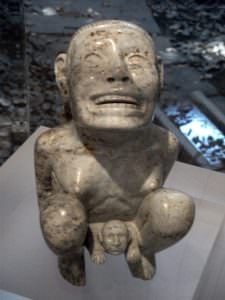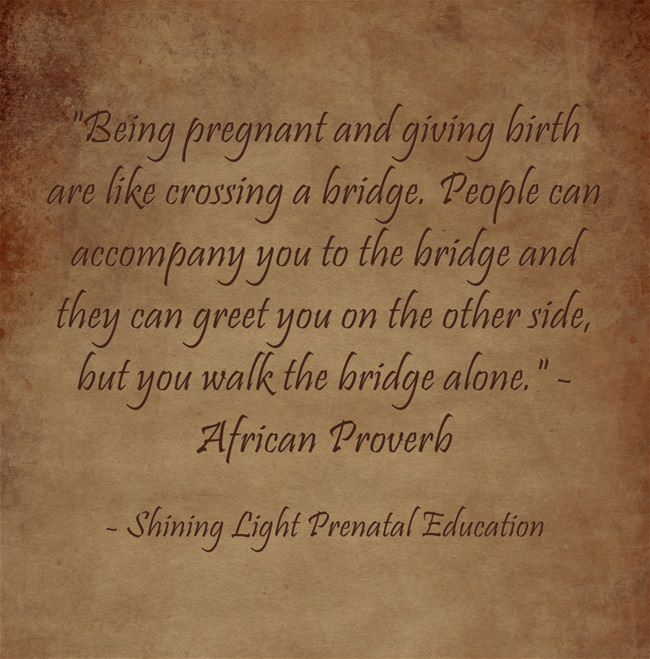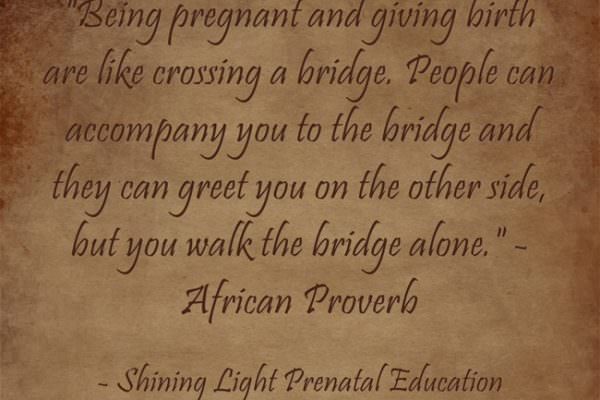
Pain is a part of human existence. We experience physical pain or discomfort and mental or emotional pain or discomfort on a fairly regular basis. How we choose to deal with that pain is entirely up to us.
Pain is inevitable, but suffering is optional.
This is true of the pain of labor as well as pain we might experience in the rest of our lives.
But why then, is pain a necessary component of labor? Why does childbirth hurt for the vast majority of women?
On the physical level, the mother’s body is being pulled and pushed in different directions repeatedly over many hours. The four uterine ligaments pull on her sacrum and pelvis with each contraction. This pressure on the bony structures causes the muscles of her body to react and attempt to stabilize her. Over time, this causes greater pain, especially with the increased frequency and longer duration of each contraction.
The baby’s movements and descent through the pelvis causes the mother to stretch and puts pressure where there was none before. This causes discomfort until the baby is able to pass all the way through and be born.
The definition of labor is physical or mental work, especially of a hard or fatiguing kind; toil. That’s a rather apt description for childbirth.
This is all well and good to know – but, what I really want to talk about is the lesson the pain of labor teaches us. No, I’m not talking about the biblical concept of the punishment of Eve – Gen 3:16 To the woman he said, “I will make your pains in childbearing very severe; with painful labor you will give birth to children. Your desire will be for your husband, and he will rule over you.” Labor pain is not punishment from God. I’m not going to even get into the “husband shall rule over you” part. My inner feminist is screaming right now…
No, I refer to labor pain as transformative. As birthing mothers, we go through a difficult trial, both physical and emotional, for a great result – the birth of a baby. Trial by fire, so to speak.
When we go through a difficult time we can use that experience to grow and change. If labor was easy and we just popped out our babies, what would we learn? Where is the spiritual growth?
This is the transformative growth of which I speak.
That African proverb is a prime illustration of the journey a mother takes to birth her baby. It’s not unlike the Hero’s Journey or Hero’s Quest a la Joseph Campbell. We have various stories, fairy tales and religious mythology which teach us that by the hard work, pain, sometimes loss and with a little help along the way, we come out the other side having learned an important lesson and having gained something in the process. Let’s look at a few examples.
“The Wild Swans” by Hans Christian Andersen was one of my favorite stories as a child. In the story, Elisa has to rescue her eleven brothers from a spell cast upon them by a witch. She must knit eleven shirts from stinging nettles and put them on her swan-brothers to turn them back into boys. However, she must work in complete silence. One word uttered by her and the spell will be broken.
Even after meeting her prince, her love, she works in silence. Even as they attempt to burn her as a witch, she works in silence till she is able to break the spell after being freed from captivity by her swan-brothers. Elisa misses out on the joy of her love and suffers the pain of being accused of witchcraft all to free her brothers. Her result was well worth the pain of bleeding fingers and the mirth of the people around her.
The Russian fairy tale of Vasilisa the Brave also shows us a young girl, who is able to overcome immense odds and the massive, evil wit of the great witch, Baba Yaga. Vasilisa’s story is a bit of a Cinderella tale with some meat on its bones. Vasilisa must bring back fire from Baba Yaga to heat the family home. It is assumed that she will fail and that Baba Yaga will consume her. Yet, the spirit of her mother, contained within a doll, is her guiding light through all of the impossible tasks she must undertake. When Vasilisa is successful in her quest she returns home her step-family is destroyed and the obstacles in her life are removed. Through pain and trial, Vasilisa is freed from her suffering.
Norse mythology tells us of Odin and how he traded his eye for wisdom. A hefty price, for sure, but for great reward. Odin also sacrificed himself to himself (as only a god can do). He hung for nine days, upside-down, from a tree with no food, water or respite. He then received the runes, a magical alphabet, from whence great power came.
There are a number of other examples as well: Amor and Psyche, Innana, Persephone, Hercules, East of the Sun West of the Moon, etc. I’m sure, with more digging, other stories with similar themes will be uncovered. Why? Because it’s a universal theme. A person goes through a painful trial to achieve a goal.
That is how birth transforms us. As birthing mothers we go through something extraordinary. We must literally break free from who we were before motherhood so we may transition into this new phase. Change hurts. To change, we must give something up. Emotional and spiritual growth only happens when we are willing to go through the fire and come out the other side. Yes, we risk being burned. We risk everything to tackle a seemingly insurmountable task. We experience pain because it is a teacher.
Pain can transform us for good or for ill. Pain is inevitable but suffering is optional. We have a choice to make. We can choose to let the pain wash over us and drown us. Or we can choose to ride the pain and become stronger for it.
***Keep in mind the difference between pain and suffering. No woman should ever suffer during labor. Suffering can be brought on by both internal and external factors. Some things are within the laboring mother’s control, others are not. If a woman’s pain rolls over into suffering, it is appropriate to consider an epidural or other pain medication.
Next up – Why we fear pain during birth.
Additional Reading:

Leave a Reply